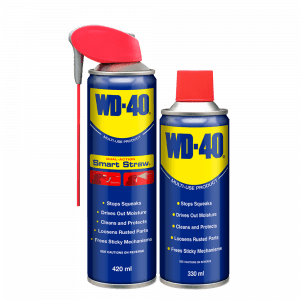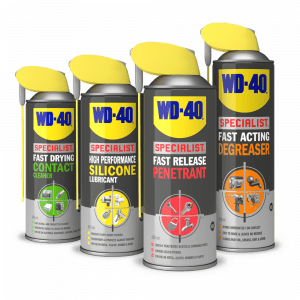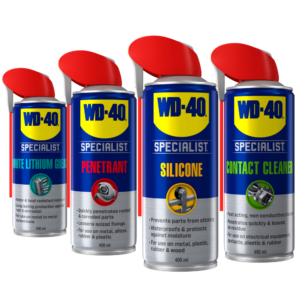Step-by-step Guide to Replacing Car Window Rubber Seals
Over time, the rubber seals around the windows and doors of older vehicles can deteriorate, causing them to loosen and air to become trapped.
Gradually, the entire seal may begin to unravel, allowing noise, water, and dust to enter the vehicle.
This is when the knowledge of replacing rubber seals becomes handy.
As seals age, they shrink, preventing a simple reattachment with glue.
However, with the help of a product like WD-40 Specialist Silicone Lubricant. , you can easily replace the rubber seal yourself.
Step 1
Preparation and Removal of Old Seal
To begin the process of replacing the rubber seals, first open your car door to ensure ample working space. Utilize a flathead screwdriver to remove the old rubber seal where it is already deteriorating.Gently ease out the rubber and pull it off with your hands, making certain to remove all remnants.
Step 2
Clean Up and Glue Residue Removal
There may be residual glue left in the seals, which needs to be cleaned away. This can be achieved using WD-40 multi-use spray, a lubricant designed specifically for cleaning various surfaces and preventing moisture retention. After applying the lubricant, use a rag to rub the surface until it feels clean, then wipe off any remaining WD-40 with paper towels.
Step 3
Preparing the Surface for Adhesive
An important step when replacing rubber seals on car windows is to create a clean, even surface for the adhesive. To achieve this, thoroughly sand the metal using fine-grit sandpaper, rubbing in circular motions. Be careful to limit your movements to the seals to prevent damaging the car’s aesthetics. This step will create a smooth, lump-free surface for the new rubber seal.
Step 4
Application of Weather-Stripping Adhesive
Weather stripping adhesive, which is used to bond rubber to metal, should be applied before placing the new seal. Start by cutting the rubber to size and dry fitting it into the window. Once you are sure that the rubber will fit well with slight pressure, apply a thin layer of adhesive to the seal and a bead of it inside the rubber.
Step 5
Placement of the New Rubber Seal
Allow the adhesive to harden slightly for about five to ten minutes. Then, start placing the rubber from one corner and gradually work your way to the other, applying slight pressure. Ensure there are no gaps and avoid stretching the rubber. Once the rubber is in place, press down on the entire strip once more to confirm its firm bond with the metal.
Step 6
Protection of the New Rubber Seal
After applying the rubber seal, protect it from corrosion using WD-40 Specialist silicone lubricant. This product can withstand temperatures from -35°C to +200°C and prevents dust attraction and moisture retention in rubber parts. Allow the rubber seals to settle for at least an hour before applying the lubricant. Use the smart straw to cover the corners and seams for deep penetration. A single coat of this silicone lubricant can maintain the softness and firmness of your car window seals for an extended period.
Conclusion
- Some vehicles have plastic inserts in the door with pins that corrode easily without proper lubrication, causing the rubber to loosen.
- Don't forget to replace these pins.
- Most rubber seals are L-shaped and should be installed with the larger surface facing inward to prevent water from entering the car.
- After applying the rubber seals, wait at least an hour before closing the doors or taking the car for a drive.
- Avoid using a screwdriver to press in the rubber. A windscreen fitter tool will do a much better job, as it is pointy end easily fits between the rubber and the frame.
The uses shown and described for WD-40 Multi-Use Product were provided to WD-40 Company by the users themselves. These uses haven’t been tested by WD-40 Company and do not constitute a recommendation of suggestion for use by WD-40 Company. Common sense should be exercised whenever using WD-40 Company products. Always follow the instructions and take heed of any warnings printed on the packaging.
Contact Us
© 2026 WD-40 Company.
All Rights Reserved



